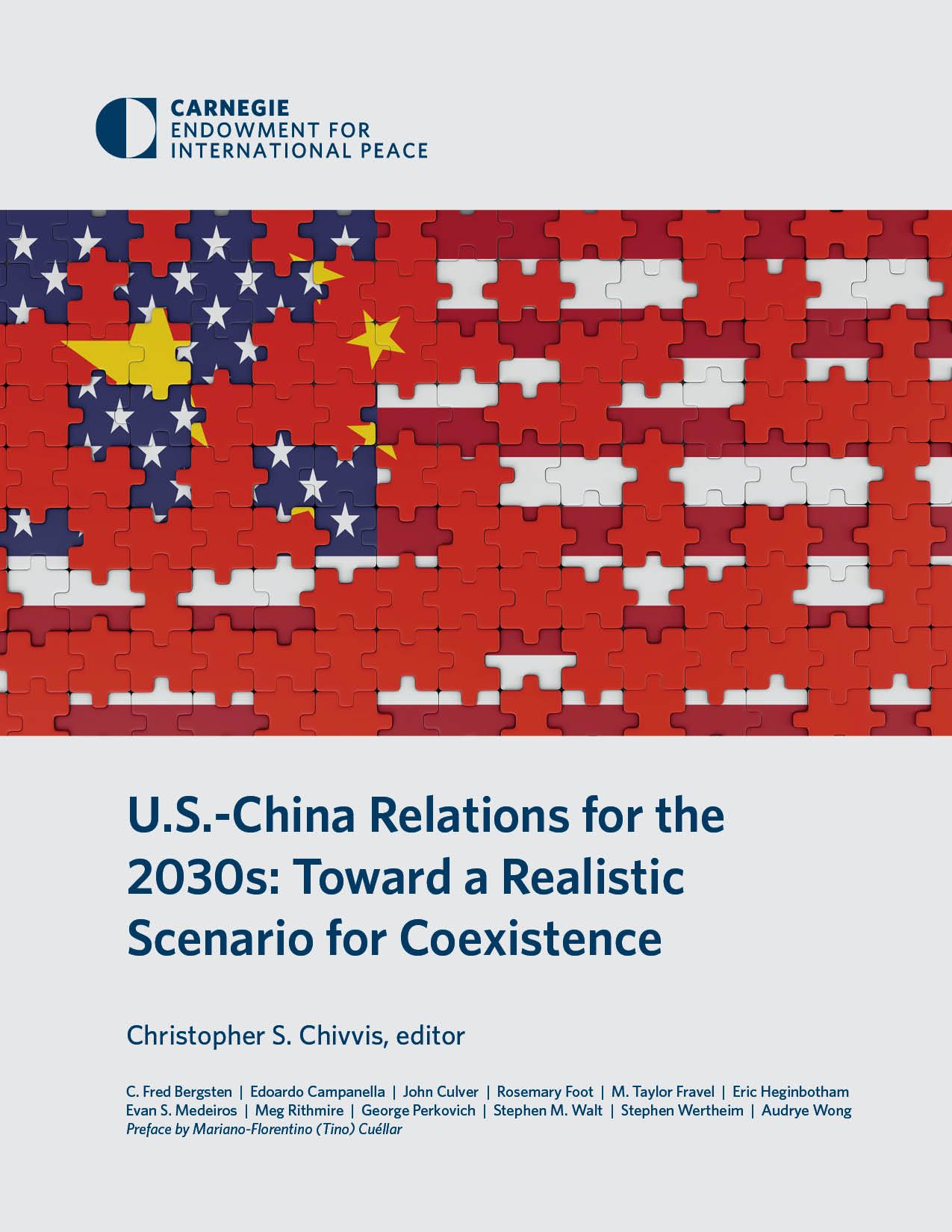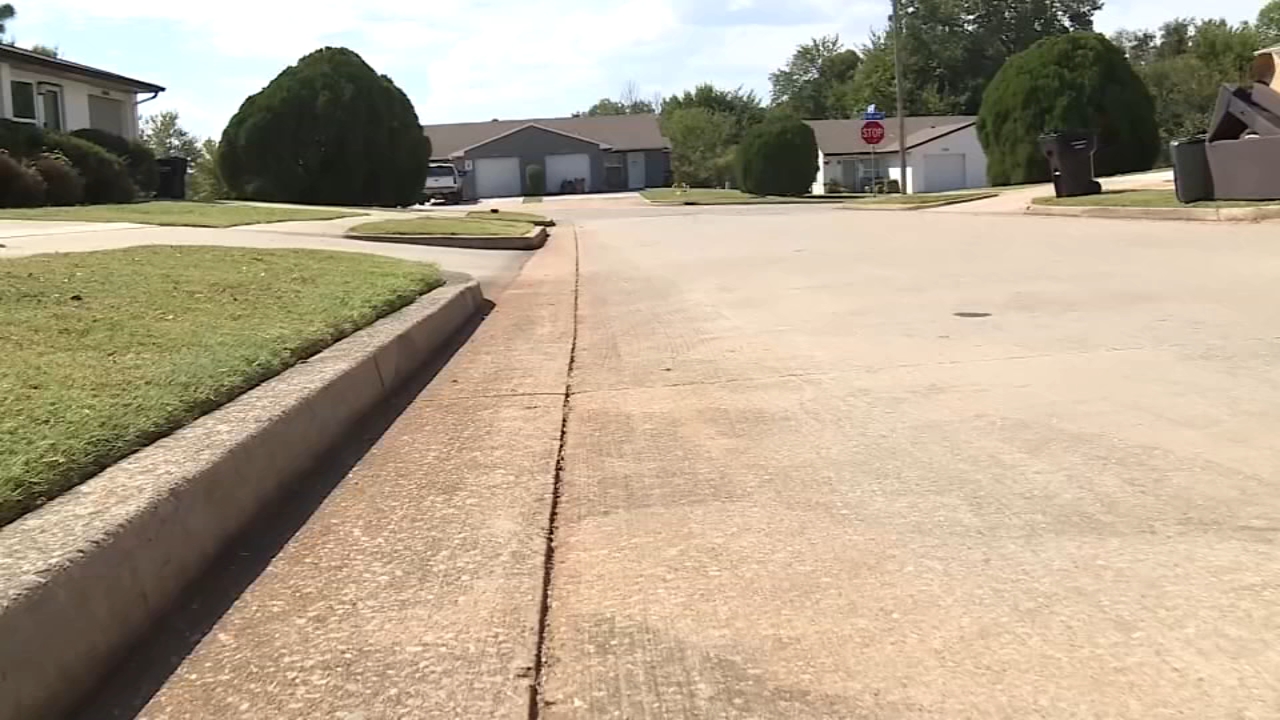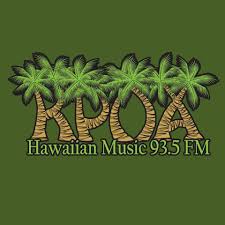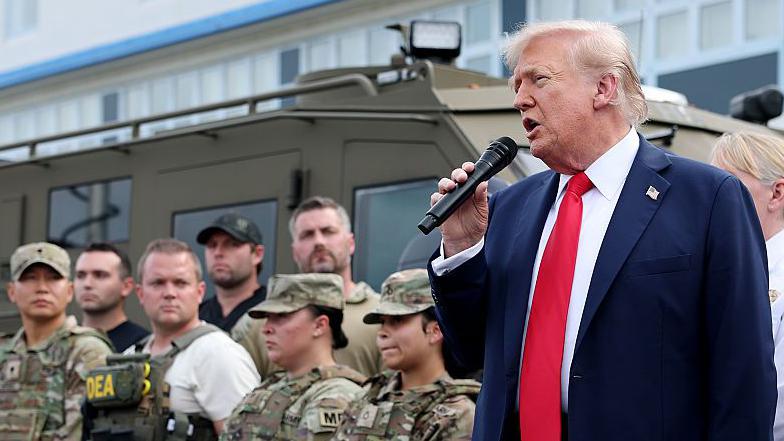A Milestone for Sustainable Peace and Development in the Region
A landmark disarmament ceremony in northern Iraq signals a significant advancement toward achieving Sustainable Development Goal 16 (Peace, Justice and Strong Institutions). The voluntary decommissioning of weapons by Kurdistan Workers Party (PKK) fighters, observed by Iraqi and Turkish officials, marks a pivotal moment in ending a four-decade conflict with the Turkish state. This development represents a decisive shift from armed struggle to democratic political engagement, a core tenet of SDG 16.
The End of a Protracted Conflict
The disarmament follows an order from Abdullah Ocalan, the imprisoned founder of the PKK, who directed the group to end its armed struggle and pursue its objectives within Turkey’s democratic framework. Bese Hozat, a senior PKK leader, affirmed this commitment, stating, “We destroy our weapons of our own free will as a decisive step toward the practical success of peace and a democratic society.”
The High Cost of Conflict: A Barrier to Sustainable Development
The 40-year conflict has been a profound obstacle to sustainable development, with severe consequences that directly contravene several SDGs.
- Human Cost: The violence has resulted in approximately 40,000 fatalities, undermining SDG 3 (Good Health and Well-being) and SDG 16 by perpetuating a cycle of violence.
- Economic Cost: The conflict is estimated to have cost Turkey nearly $2 trillion, diverting critical resources that could have been invested in achieving SDG 8 (Decent Work and Economic Growth) and SDG 1 (No Poverty).
- Social Cost: The depopulation of thousands of Kurdish villages and urban warfare have hindered progress on SDG 11 (Sustainable Cities and Communities) and exacerbated divisions, working against SDG 10 (Reduced Inequalities).
The Path to Disarmament: Fostering Inclusive Institutions (SDG 16 & SDG 10)
The peace process has been underpinned by long-term political efforts and a renewed commitment to building inclusive institutions, which are essential for lasting peace and reducing inequality.
Political Leadership and Reforms
President Recep Tayyip Erdogan’s engagement on the Kurdish issue has evolved over decades, from early advocacy for greater Kurdish rights to implementing key reforms. These actions have been instrumental in creating the conditions for peace.
- Lifting Cultural Restrictions: Erdogan’s government lifted the ban on the Kurdish language, allowed education in the mother tongue, and established Kurdish-language media. This directly supports SDG 4 (Quality Education) and SDG 10 by recognizing and protecting the cultural identity of a minority group.
- Political Dialogue: Secret talks with the PKK leadership, initiated in the late 2000s, laid the groundwork for a 2013 ceasefire and the current disarmament.
- Legislative Cooperation: President Erdogan has signaled a new era of cooperation, stating his coalition will “walk together” with pro-Kurdish lawmakers to complete the disarmament process, a crucial step toward building the effective and inclusive institutions called for in SDG 16.
Geopolitical Dynamics and Partnerships for the Goals (SDG 17)
The successful disarmament was influenced by significant regional shifts and international partnerships, highlighting the interconnectedness of peace and diplomacy as envisioned in SDG 17.
The Syrian Variable
The resolution of the conflict is intrinsically linked to the situation in Syria. The toppling of the Assad regime and the subsequent push by the international community, including the United States, for the Syrian Democratic Forces (SDF) to integrate into a new, unified Syrian government have alleviated many of Turkey’s security concerns. This coordinated international effort demonstrates a partnership approach to resolving complex regional conflicts.
Post-Gaza War Realignment
The war in Gaza and rising regional tensions prompted a strategic re-evaluation by all parties. Turkish officials redoubled their efforts in talks with Ocalan, concerned about the potential for the PKK to find new patrons. Concurrently, Ocalan expressed his refusal to allow the Kurdish movement to be used as a proxy in a broader regional power struggle, prioritizing a stable peace with Turkey.
Peace Dividends: Accelerating the 2030 Agenda
The end of the conflict unlocks significant potential for sustainable development, creating opportunities to advance economic, social, and environmental goals across the region.
Economic Growth and Infrastructure (SDG 8 & SDG 9)
With peace, Turkey can redirect its focus and resources toward transformative economic projects.
- Infrastructure for Connectivity: The ambitious Iraqi Development Road project, connecting the Persian Gulf to Turkey via rail and highways, can now proceed without the threat of PKK attacks, boosting trade and regional integration in line with SDG 9 (Industry, Innovation and Infrastructure).
- Investment and Tourism: War-ravaged towns and valleys in southeastern Turkey can finally attract investment and tourism, fostering local economic growth and creating decent work (SDG 8).
Reducing Inequalities and Building Sustainable Communities (SDG 10 & SDG 11)
The peace settlement offers a historic opportunity to address the root causes of the conflict and build a more equitable society.
- Securing Rights and Investment: The Kurdish population can now pursue greater cultural rights, increased government investment in southeastern Turkey, and legal frameworks for the safe return of former fighters.
- A Future Without War: For the first time in decades, Kurdish communities in Turkey, Syria, and Iraq have a tangible prospect of a future free from conflict, allowing for the rebuilding of communities and the establishment of lasting stability and prosperity.
1. Which SDGs are addressed or connected to the issues highlighted in the article?
SDG 16: Peace, Justice and Strong Institutions
- The article’s central theme is the end of a four-decade-long armed conflict between the Kurdistan Workers Party (PKK) and the Turkish state. It details the disarmament process, peace talks, and the shift from violence to political engagement, which are core components of SDG 16.
SDG 10: Reduced Inequalities
- The article discusses the historical social and political disenfranchisement of the Kurdish population in Turkey, including the banning of their language and the criminalization of their identity. The peace process aims to address these inequalities by granting “greater cultural rights” and political legitimacy, directly aligning with SDG 10.
SDG 8: Decent Work and Economic Growth
- The conflict’s immense economic burden on Turkey, estimated at “close to $2 trillion,” is highlighted. The article states that peace will free up these resources, allowing Turkey to “focus on strengthening its position as a regional powerhouse” and enabling “investment and tourism” in previously war-torn areas, which relates to fostering economic growth.
SDG 9: Industry, Innovation and Infrastructure
- The end of the conflict is presented as an enabler for major infrastructure projects. The article specifically mentions the “ambitious Iraqi Development Road, which would connect it to the Persian Gulf through railways and highways,” a project previously vulnerable to attacks. This connects directly to the goal of developing resilient regional infrastructure.
SDG 17: Partnerships for the Goals
- The resolution of the conflict involves multiple actors and international cooperation. The article mentions the involvement of “Iraqi and Turkish officials,” lobbying efforts by “Turkey and Saudi Arabia with the United States and Europe,” and the US government pushing the Syrian Democratic Forces (SDF) towards an agreement. This multi-stakeholder approach is central to SDG 17.
2. What specific targets under those SDGs can be identified based on the article’s content?
SDG 16: Peace, Justice and Strong Institutions
- Target 16.1: Significantly reduce all forms of violence and related death rates everywhere. The article directly addresses this target by describing the “disarmament ceremony,” the PKK’s declaration to “end its armed struggle,” and the cessation of a conflict that has “killed around 40,000 militants, soldiers, and civilians since 1984.”
- Target 16.7: Ensure responsive, inclusive, participatory and representative decision-making at all levels. The article points to this target by noting that the future for Kurdish politics is now “within Turkey’s democratic framework” and that President Erdogan’s coalition will “walk together with pro-Kurdish lawmakers to pass legislation.” This signifies a shift towards inclusive political processes.
- Target 16.10: Ensure public access to information and protect fundamental freedoms. This is relevant through the mention of past repression, such as the “banned Kurdish language,” and the subsequent reforms where Erdogan “lifted the ban on Kurdish language, allowed the Kurds to teach in their mother tongue, and set up radio and television networks to broadcast in Kurdish.”
SDG 10: Reduced Inequalities
- Target 10.2: By 2030, empower and promote the social, economic and political inclusion of all, irrespective of… ethnicity… or other status. The article describes the journey from Kurds being a “socially and politically disenfranchised” group to a potential future of political inclusion, where the pro-Kurdish party is accepted as a “legitimate political force.”
- Target 10.3: Ensure equal opportunity and reduce inequalities of outcome, including by eliminating discriminatory laws, policies and practices. The lifting of the ban on the Kurdish language and the promise of “greater cultural rights” are direct actions toward eliminating discriminatory practices mentioned in the article.
SDG 8: Decent Work and Economic Growth
- Target 8.1: Sustain per capita economic growth in accordance with national circumstances. The article implies that ending the conflict, which cost nearly “$2 trillion,” will create a “peace dividend,” freeing up national resources that can be redirected to productive economic activities and help Turkey “focus on becoming a regional power.”
SDG 9: Industry, Innovation and Infrastructure
- Target 9.1: Develop quality, reliable, sustainable and resilient infrastructure, including regional and transborder infrastructure. The article explicitly mentions the plan for the “Iraqi Development Road, which would connect it to the Persian Gulf through railways and highways,” as a commercial project that can now proceed, demonstrating a focus on building transborder infrastructure.
SDG 17: Partnerships for the Goals
- Target 17.16: Enhance the global partnership for sustainable development, complemented by multi-stakeholder partnerships. The peace process is described as a complex negotiation involving the Turkish government, the PKK, and international actors like the US, which “supported Turkish peace talks with Ocalan” and “pushed the SDF to sign an agreement,” showcasing a multi-stakeholder partnership for peace.
3. Are there any indicators mentioned or implied in the article that can be used to measure progress towards the identified targets?
Indicators for SDG 16 Targets
- (Target 16.1) The number of conflict-related deaths, which is expected to drop to zero from the historical figure of “40,000.”
- (Target 16.1) The act of disarmament itself, described as fighters who “unclasped their war belts, unburdened their shoulders of AK-47 rifles, and placed their weapons in a bowl-shaped silver boiler.”
- (Target 16.7) The passing of joint legislation between Erdogan’s coalition and “pro-Kurdish lawmakers.”
- (Target 16.7) The level of participation of the pro-Kurdish DEM party in Turkish politics, such as supporting a new constitution.
- (Target 16.10) The number of schools teaching in Kurdish and the operational status of “radio and television networks to broadcast in Kurdish.”
Indicators for SDG 10 Targets
- (Target 10.2) The official recognition of the pro-Kurdish party as a “legitimate political force” and an end to the “persecution” and arrests of its politicians.
- (Target 10.3) The implementation of “legal reforms to facilitate the safe return of former PKK fighters.”
- (Target 10.3) The amount of “increased government investment in southeastern Turkey.”
Indicators for SDG 8 & 9 Targets
- (Target 8.1) The reallocation of the national budget from military spending on the conflict (previously costing up to “$2 trillion”) to development projects.
- (Target 9.1) The progress and completion of the “Iraqi Development Road” and other trade routes through Syria.
- (Target 8.9 – Implied) An increase in “investment and tourism” in “war-ravaged towns and valleys.”
Indicators for SDG 17 Target
- (Target 17.16) The successful integration of the SDF into the new Syrian government and military, facilitated by international partners like the United States.
- (Target 17.16) The establishment of a “new regional order” through continued cooperation between Turkey, Iraq, Syria, and other regional and global powers.
4. Summary Table of SDGs, Targets, and Indicators
| SDGs | Targets | Indicators Identified in the Article |
|---|---|---|
| SDG 16: Peace, Justice and Strong Institutions |
16.1: Reduce all forms of violence and related death rates.
16.7: Ensure responsive, inclusive, and participatory decision-making. 16.10: Ensure public access to information and protect fundamental freedoms. |
– Reduction in conflict-related deaths from the 40,000 baseline. – PKK disarmament ceremony and destruction of weapons. – End of the armed struggle. – Joint legislation passed by Turkish government and pro-Kurdish lawmakers. – Kurdish political participation within Turkey’s democratic framework. – Operation of Kurdish language media (radio, TV) and schools. |
| SDG 10: Reduced Inequalities |
10.2: Promote social, economic, and political inclusion.
10.3: Ensure equal opportunity and reduce inequalities of outcome. |
– Pro-Kurdish party accepted as a “legitimate political force.” – Elimination of discriminatory practices like the ban on the Kurdish language. – Increased government investment in southeastern Turkey. – Legal reforms for the return of former fighters. |
| SDG 8: Decent Work and Economic Growth | 8.1: Sustain per capita economic growth. |
– Reallocation of funds from the conflict’s $2 trillion cost to development. – Increased investment and tourism in former conflict zones. |
| SDG 9: Industry, Innovation and Infrastructure | 9.1: Develop quality, reliable, and resilient regional infrastructure. |
– Construction and operation of the “Iraqi Development Road” (railways and highways). – Opening of trade routes through Syria. |
| SDG 17: Partnerships for the Goals | 17.16: Enhance the global partnership for sustainable development. |
– Cooperation between Turkish and Iraqi officials. – US support for peace talks and pushing the SDF to an agreement. – Lobbying efforts by Turkey and Saudi Arabia with the US and Europe. |
Source: time.com







